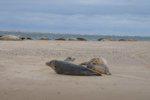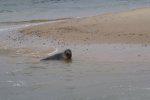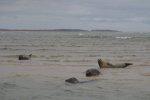 Over recent years eco-tourism is becoming more and more popular all around the world, benefiting both local wildlife and people that live in the area. However, you don't need to travel thousands of miles to another country to really take advantage of seeing animals in their natural habitats as there are numerous ventures in the UK alone.
Over recent years eco-tourism is becoming more and more popular all around the world, benefiting both local wildlife and people that live in the area. However, you don't need to travel thousands of miles to another country to really take advantage of seeing animals in their natural habitats as there are numerous ventures in the UK alone.Although most of our large mammals have all but disappeared throughout the British Isles, there are still some that can be spotted in large numbers along the coasts co-inhabiting remote beaches with birds and other wildlife. There are only two species of Seal that are native to British waters which are the Grey Seal and the rarer Common Seal.

Although around 75% of the UK's Grey Seals are found living off the Scottish coast, there are also large populations elsewhere, most notably around Blakeney Point on the north coast of Norfolk where both Grey Seals and Common Seals can be found inhabiting the beaches and sand-dunes together (along with numerous species of bird).


